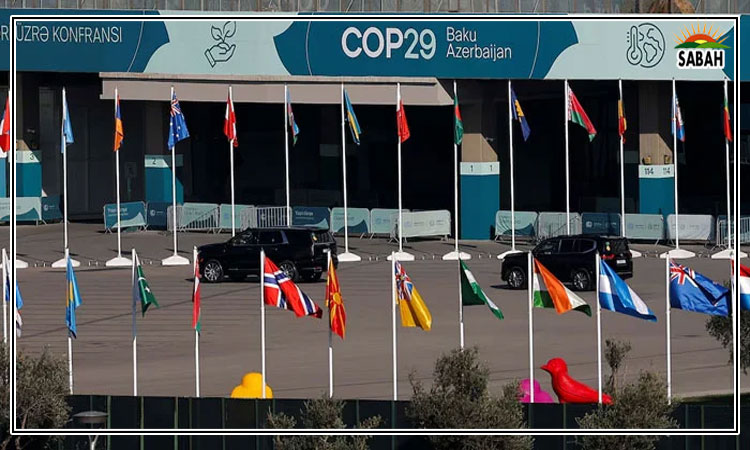On the right side…M Shahrukh Shahnawaz
Member of Doctors for the Environment Australia Dr Graeme McLeays opinion that climate protesters are heroes, and on the right side of history stirred up debate about disruptive climate activism.
These disruptive climate protests included blocking roads, activists gluing themselves to valuable artwork, and destroying property which includes smashing bank windows and spraying fake blood over buildings. These protests were carried out by groups like Extinction Rebellion.
The debate gained attention in 2022 when in the UK, Just Stop Oil activists blocked the traffic on the M25 or London Orbital Motorway for days, during the UN Climate Change Conference (COP27), and demanded the government halt new licences for exploration of oil in the UK.
Protests were also seen in the Netherlands against the governments announcement of nitrogen emission cuts in July 2022 by Dutch farmers by burning hay bales and dumping manure on highways as it was estimated that the radical cuts would result in 11,200 farms being closed, and another 17,600 farmers reducing their livestock.
In 2022, climate activists in France filled golf course holes with cement to protest against the exemption of golf greens from water bans during severe drought. In January 2023, Swedish climate activist Greta Thunberg was detained for protesting against the expansion of the Garzweiler coal mine, run by energy firm RWE, a German energy multinational corporation. In 2023, she and the Sami indigenous community blocked the main road to Norways royal palace to protest against wind turbines built on reindeer pastures used by Sami herders.
Such activism, however, is not new. In 1975, Greenpeace launched its first anti-whaling campaign against the Soviet fleets in the North Pacific. And in 1985, France committed state terrorism by sinking Rainbow Warrior, a Greenpeace flagship, for protesting against the French nuclear test in Moruroa in the Pacific Ocean.
State terrorism was also visible during COP27, held in Egypt. According to Human Rights Watch, the Egyptian governments continuous repression prevented civil society from participating at the summit due to fear of reprisals, raising concern of humanity addressing the climate crisis in such a climate of fear.
In the Dakota Access Pipeline Protests in 2017, for the indigenous lands of Native Americans, the police used excessive force against protestors, and thereafter, climate activism was penalized by many US states. The UK took similar actions against climate activists, and the right to protest was curtailed.
In any case, can civil disobedience, violence and even destruction of property be justified while democratically exercising the right to protest? In the present-day scenario, it was debated at COP27 whether the 1.5 degrees C target set in the Paris Agreement 2015 was still achievable. These questions based on the report by the Intergovernmental Panel on Climate Change (IPCC) 2022, which states that many of the impacts of global warming are now irreversible.
But is this argument enough to justify such actions? The answer is no. However, while classical philosophers like Thomas Hobbes favours an absolute sovereign, John Locke supports people overthrowing their government through revolution, if it acts against their interests and rights.
Modern-day philosopher Andreas Malm in his book, How to Blow Up a Pipeline, supports violence and sabotage, but only against polluting objects, and not individuals. Such ideas should not be supported, but they are backed by the arguments of the failure of authorities to implement environmental laws for the sake of big businesses.
Even if the government declares such acts as environmental terrorism, like any other form of terrorism, their causes need deeper understanding, which were apparent in civil disobedience and extreme form of protests by European suffragettes and American civil rights leaders. Psychological causes like eco-anxiety, and socioeconomic causes of losing ones home and land to floods or acquisition are chief among many.
Kay Sara, an indigenous artist, demonstrated a non-violent protest to protect her peoples lands and way of life, against the Brazilian government, by performing the modern take on the Greek play Antigone to protect the Amazon.
Pakistan has seen non-violent protests in Sindh against the left bank outfall drain; failure to rehabilitate flood victims; illegal constructions on rivers; depleting fishery resources; indigenous populations displacement by land acquisition; wildlife extinction including blind dolphins; mangrove destruction; and the twin islands takeover. Balochistan saw protests against illegal fishing trawlers, and Gilgit-Baltistan against illegal land grabbing.
Local stakeholders and communities vulnerable to climate change need to be involved in decision-making processes, policymaking, legislation and its implementation. This is because failure to implement laws lays down the groundwork for justifying violence. The environmental criminal law should focus more on polluters than protesters.
Courtesy The News












